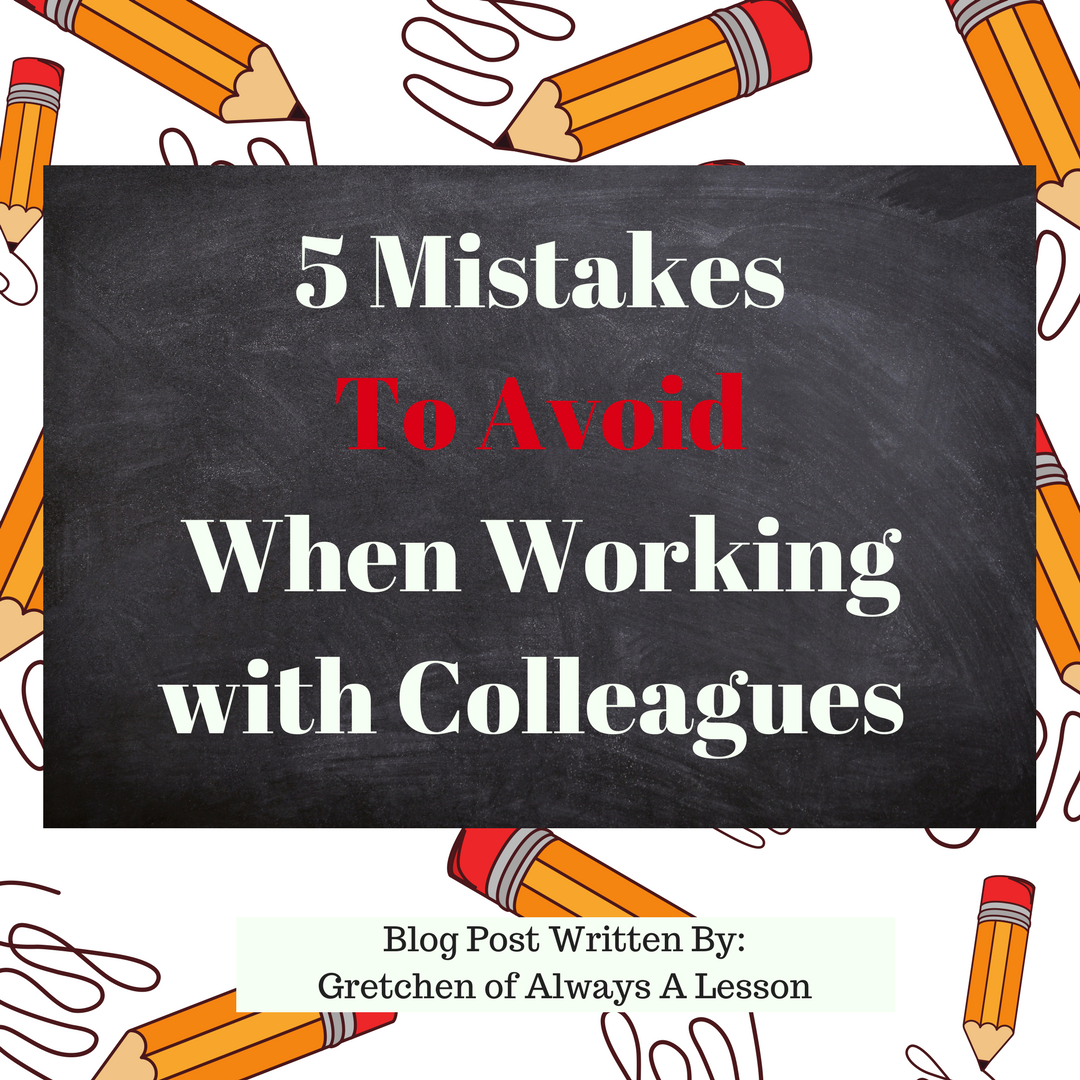5 Mistakes To Avoid When Working with Your Colleagues
Collaborating with colleagues can be one of the most powerful tools a teacher utilizes to improve their craft. Although teachers might feel isolated at times in their own classrooms facing a unique set of student needs, collaborating with colleagues can amplify the strength of each individual within the team, making the sum of the parts amazingly powerful.
There is magic in community, but navigating the waters of collaboration can be tricky. To ensure a productive, empowering partnership, educators should avoid the 5 mistakes listed below when collaborating with colleagues:
- Assumptions – Each person on the team has a different perspective, communication style and personality. These factors affect how someone speaks and listens when collaborating. Making assumptions about others (or their circumstances) limits the power of collaboration and resentment begins to seep in to the relationship.
- Solution– To avoid making assumptions of others, ask questions for further clarity or pull the individual aside to speak in private. Getting to know your colleagues better can help everyone understand each other as well as limits the probability of assumptions creating tension in the relationship.
- Blame – When working with others, there will be bumps in the road. When these obstacles appear, it can be tempting to point fingers. The individual being blamed will end up putting up an emotional wall, disengaging from the team’s momentum, and shutting down. This reaction does not create healthy balance within the group nor does it have students’ best interest at heart.
- Solution- It is best to accept the reality of the situation, regardless of who caused it, and begin problem solving. By focusing time and attention on getting the team back on track, not only is time and the relationship saved, but the guilty party might even just apologize for their role in creating the obstacle from the start.
- Disengagement – It is unfair to have access to the strength of the team without holding up your end of the bargain. It’s important that each team member is engaged during collaboration so the weight of the workload is on everyone’s shoulders, the talents of the team are best utilized, and progress can be achieved quickly. Withdrawing from the group limits the team which hurts students in the end.
- Solution- Stay focused on your main duty which is to educate children. By keeping emotions in check and your sights on the end game, your motivation will remain high which increases your engagement within the group.
- Miscommunication – Time is limited during the school day, and miscommunication can easily occur when not all parties are present for an exchange (ie. text messages, emails, or quick shouts in the hallway). It can become a recipe for disaster if you are not overly clear to the entire team.
- Solution- Be sure everyone is included in discussion avenues and all details are shared thoroughly. Decide which communication tool works best for the team and be consistent in using it so that everyone knows to check in often to stay up-to-date on things.
- Selfishness – The power is in the group as a whole, so keeping ideas or talents to yourself only hurts the team. All students deserve a quality education so teachers within the school building must put together their best assets to improve student achievement. When a team member limits their contribution to solely benefit their students and classroom only, other students are missing out on great learning opportunities. By reserving resources or ideas to a single student or classroom is selfish and causes conflict within the team.
- Solution- A giving spirit can inspire the team to return the favor above and beyond in the future. Share your ideas and let the team decide if they want to participate, rather than you making that decision for them.
By avoiding the 5 behaviors listed above, educators can magnify their instructional potential in their classroom, positively impacting students every day.
What collaboration mistake would you add to this list for teachers to avoid when working with colleagues?


